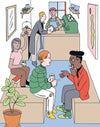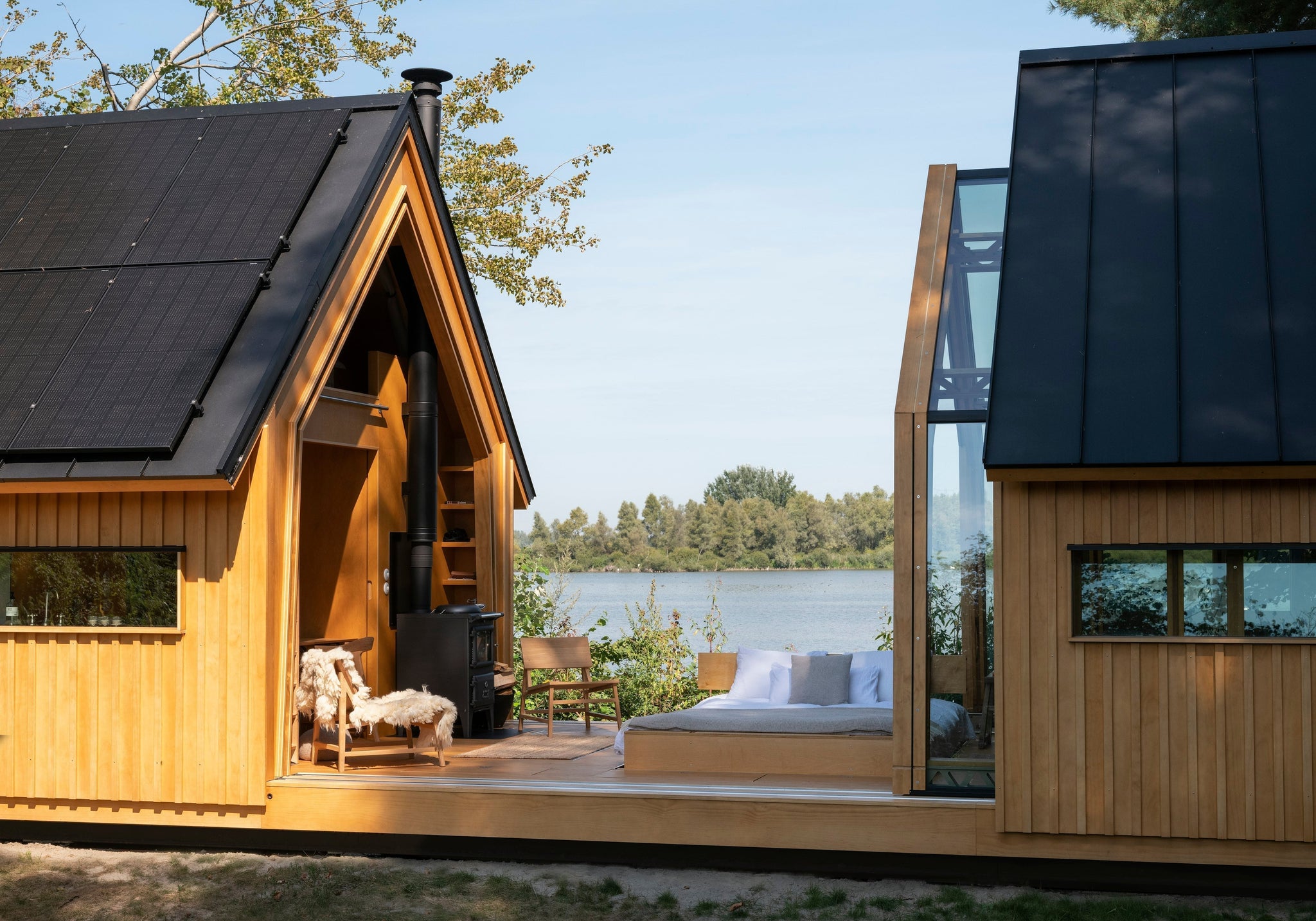
05/2021
For numerous brands born in the untamed age of the Internet, community building is a concept that hasn't been restricted by geography. The road to longevity is paved with a brand's ability and commitment to building a coterie around that vision or lifestyle. The importance of crafting a community has been raised to newfound heights in the unusual times of a pandemic.
"Share a bit of your personality, what you’re interested in, what the business stands for”
When Steve Huffman and Alexis Ohanian founded Reddit in 2005, they were the only ones posting for weeks on end under fake accounts to create a sense of community and dialogue in the platforms. Ohanian under the username ‘u/kn0thing’ posted dozens of times, then one day they reached a tipping point where new users felt comfortable enough to contribute and were brought into their vision. Today Reddit is made up of more than a million organic individual communities (known as subreddits), with some having as many as 20 million subscribers. In truth, the success of a brand is as much tied to its ability to forge a community as the idea.
"There are two ways to do business: one is to try and make money real quick, do some flash-in-the-pan shit and keep it moving. The other way is to slow-roll it," explains Chris Black, co-founder of brand agency Public Announcement. But this nouveau-riche approach doesn't translate to progression. Writing in Work Better. Live Smarter. Be Happier., he goes on to say, "If you want to have a successful, long-term business, investing in organic growth is the only way to do it. It’s like anything else: you do it slowly, you do it methodically, you get better at it, and the customer grows with you. That’s how you form a bond–for longevity, that’s the play."
An aficionado on authenticity and the co-host of the How Long Gone podcast, Black suggests that brands ought to share their vision and progress with their loyal fanbase. "Share a bit of your personality, what you’re interested in, what the business stands for. That stuff will lead to an organic conversation with a customer that will help naturally create that community," he explains. Otherwise, it just feels like the business is there for the money.
He points to New York-based clothing label Aimé Leon Dore as a great case of a brand doing it right. They know who they are and what they do well, "its retention is crazy," says Black, "But it stays in this zone that it’s comfortable with, and the customer can live with it. It maintains that nice, almost one-on-one conversation with the customer that’s made them customers for life. And that’s always the goal."

The term ‘community’ may seem a vague, intangible concept to many of us, but not many businesses get anywhere without having first invested time and effort into establishing one. To build one, there are certain core elements that you’ll need to have in place right from the start to make sure your community is as strong as possible. (All illustrations: Peter Gamlen, Work Better. Live Smarter. Be Happier.)
Then at the other end of the spectrum there are brands that bill themselves as being based on mental health. "Like, what? How does your profitable clothing brand speak on mental health besides just exploiting the phrase in a way that doesn’t feel real," questions Black. There are instances when brands grab onto buzzwords they think they need to talk about—that just comes off to the intelligent consumer as unappealing and inauthentic.
The past 18 months have caused tremendous uncertainty for brands and have therefore made virtual communities crucial. The playbook for interaction has been rewritten in many ways. We spoke to Jeff Taylor, founder of Courier magazine, to discuss what new opportunities or virtual avenues the pandemic presented and taught brands when it comes to community building. "In many ways, what was true before the pandemic remains true now—it’s still about working out where your customers are spending their time and then being intentional about how you communicate with them there," he explains. That said, to him "brands have definitely seen the increased importance of micro-communities (on the likes of Discord, Reddit, or private Instagram channels), often with very specific purposes in mind—for example, coming up with ideas for new products."
It is all about getting closer to these highly engaged customers, and "speaking directly with them to understand their concerns or ideas has been really effective for business owners looking to replicate their previous face-to-face customer conversations. Even when the world returns to normal, I’d expect the majority of brands to maintain and expand these more intimate online communities." Taylor has noticed that a common trait in many of the more successful small businesses is TikTok driving high engagement by focusing on pretty raw, behind-the-scenes footage. He says that "showing the authentic ins and outs of running their business, including recent struggles and without the manicured veneer of press releases or brand narrative has been really refreshing. When it comes to community building, that openness and vulnerability have led to much more genuine connections between the people running businesses and the folks who purchase from them."
“Micro-communities are allowing people to identify their tribe and feel like they’re part of something bigger”
At one time the industry believed that if you build the brand, then the community will follow. But this concept feels flat and out-of-date when reflecting on modern markets. Building a community doesn't mean putting more money into marketing, instead, it means more business strategy and the engineering of a core, like-minded tribe. Too frequently, brands isolate their community efforts within the marketing function. Throwing big budgets at marketing doesn't forge a community, what is needed instead is a business strategy with a universal goal.
What does the future of brand building look like? Taylor and Black both look at digital clubhouses as tools for authenticity and nurturing an identity. "I honestly think that micro-communities are the way forward," says Black, "Jason Stewart and I launched our podcast, How Long Gone, in Spring 2020 and we’ve done exactly that. We have these conversations, whether it’s with guests or listeners, and the truth is that basically, everybody’s trying to community-build." A micro-community is a small segment of its online audience that shares the same interests, views, lifestyles, or values. Increasingly they spring up on platforms like Slack, Discord, and private Instagram accounts, but also on direct-messaging apps like Community or Attentive.
Black says the more micro, the more realistic, the more authentic, and the more real it is. This group builds brand loyalty and opens the door to more highly engaged community members. It also means more valued feedback from those that understand the service the brand is trying to provide. They also distill your weaknesses earlier, which can vastly improve product development later down the line. "Micro-communities are allowing people to identify their tribe and feel like they’re part of something bigger, " Black goes on to say, "and that is probably more important than having a super-cool product in itself. That’s the thing that people are truly searching for."
Hear stories from entrepreneurs who launched their own business and figure out how to get started yourself through Work Better. Live Smarter. Be Happier.









